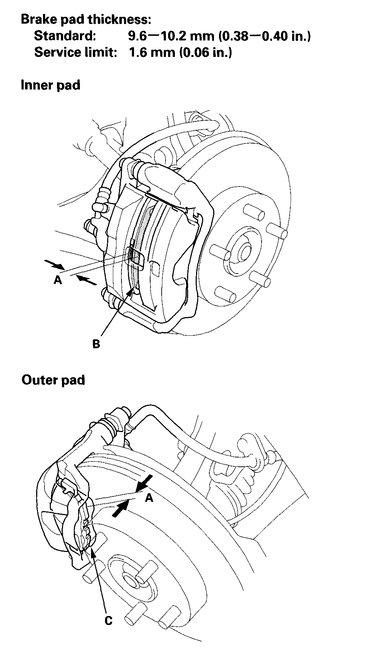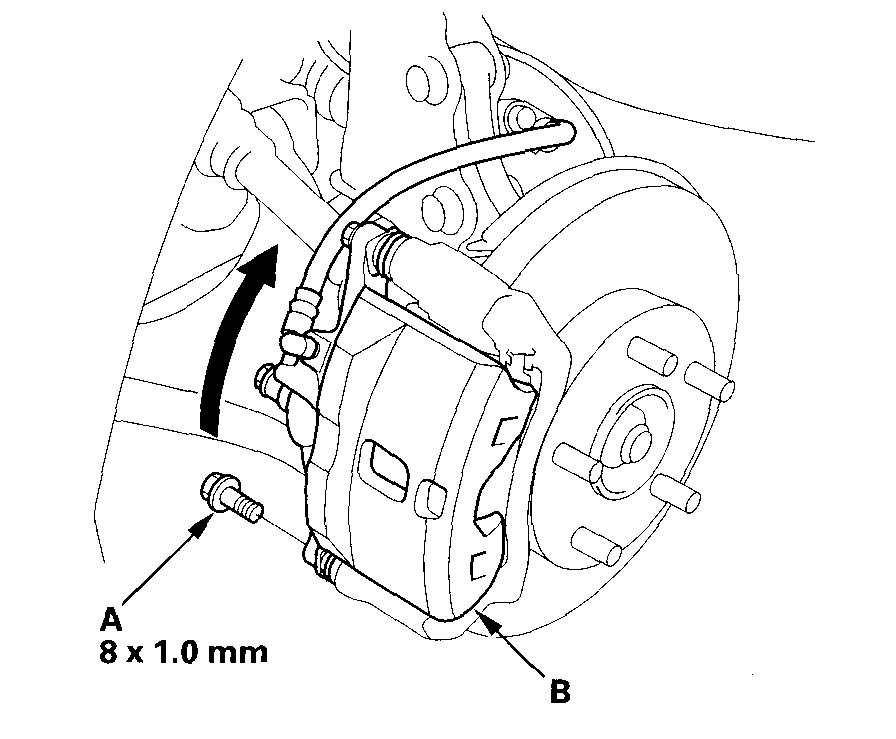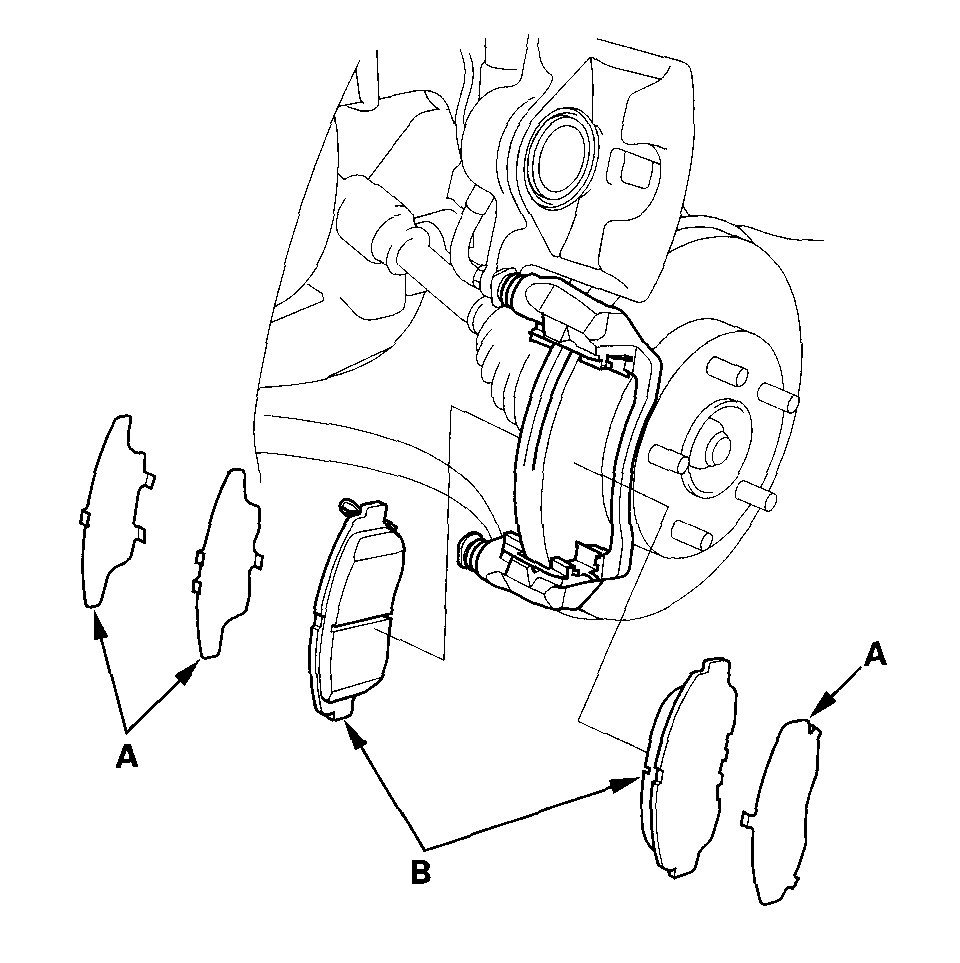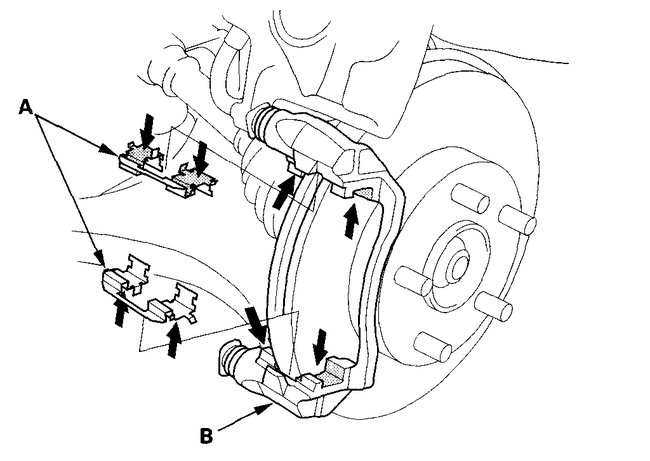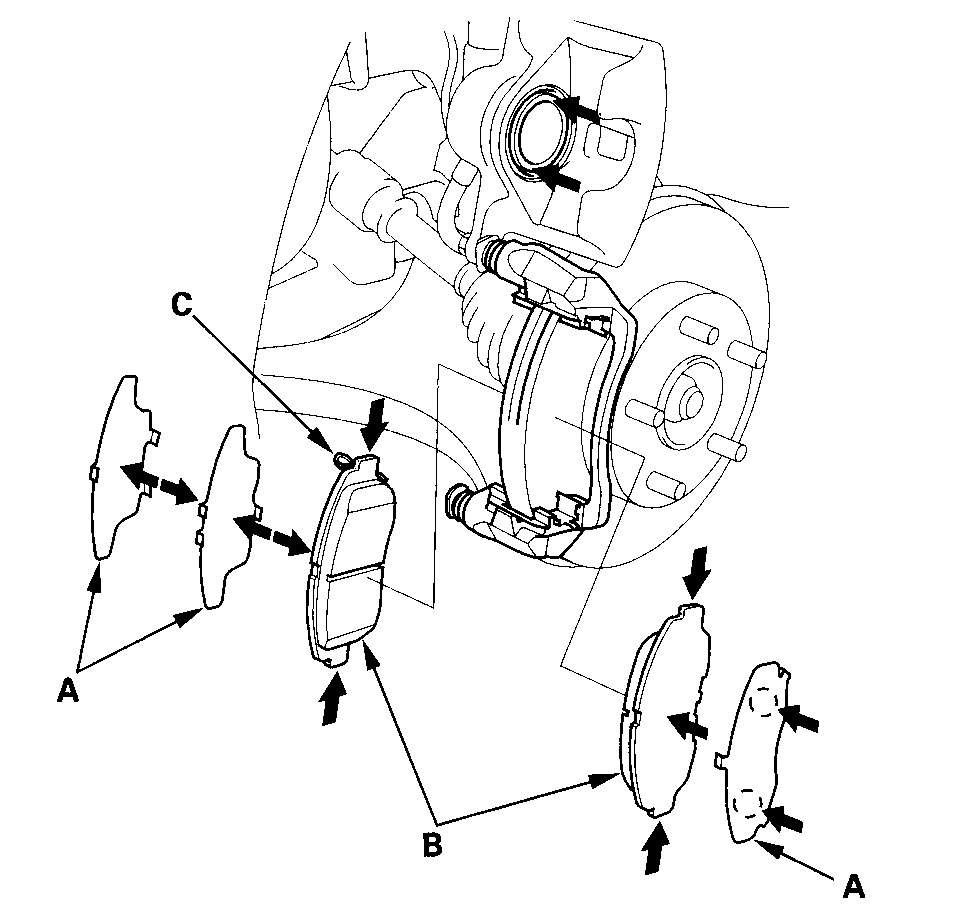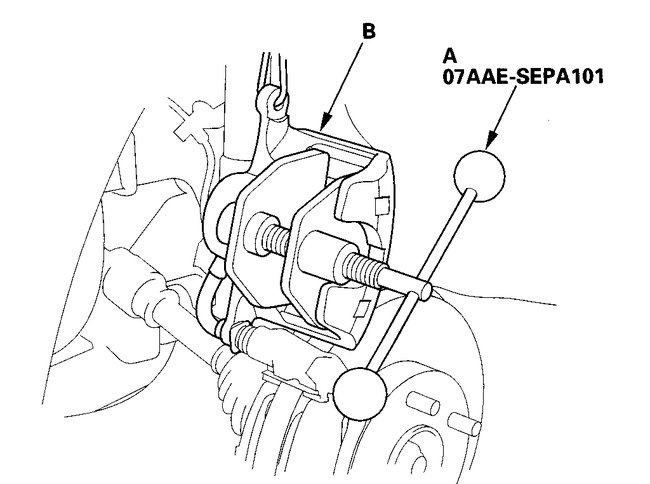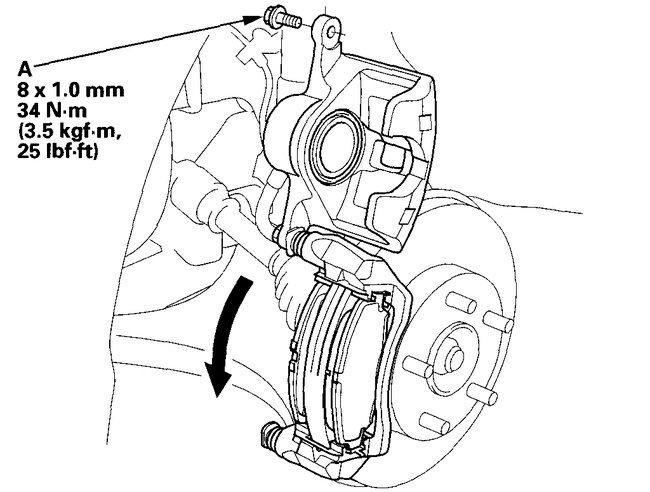Welcome to 2CarPros.
My first suspect is you need brakes. The brake pads have a steel sensor on them which will rub the rotor when the pads are worn. Thus, you hear a squealing sound indicating it's time for brakes. It could be other things, but that is what I suggest checking first.
Here is a link that explains in general how to replace front brake pads on a front wheel drive vehicle. If you check them and are unsure if they need replacement, upload a picture of the brake pads for me to see.
https://www.2carpros.com/articles/how-to-replace-front-brake-pads-and-rotors-fwd
Here are the specific directions for your vehicle. The directions indicate how to check the condition of the brake pads. The attached pictures correlate with the directions.
____________________________________
Front Brake Pad Inspection and Replacement
Special Tools Required
Brake caliper piston compressor 07AAE-SEPA101
CAUTION: Frequent inhalation of brake pad dust, regardless of material composition, could be hazardous to your health.
Avoid breathing dust particles.
Never use an air hose or brush to clean brake assemblies. Use an OSHA-approved vacuum cleaner.
Inspection
1. Raise the front of the vehicle, and support it with safety stands in the proper locations.
2. Remove the front wheels.
picture 1
3. Check the thickness (A) of the inner pad (B) and outer pad (C). Do not include the thickness of the backing plate.
4. If the brake pad thickness is less than the service limit, replace the front brake pads as a set.
Replacement
1. Raise the front of the vehicle, and support it with safety stands in the proper locations.
2. Remove the front wheels.
picture 2
3. Remove the flange bolt (A), and pivot the caliper (B) up out of the way. Check the hose and pin boots for damage and deterioration.
picture 3
4. Remove the pad shims (A) and brake pads (B).
picture 4
5. Remove the pad retainers (A).
6. Clean the caliper bracket (B) thoroughly; remove any rust, and check for grooves and cracks.
7. Check the brake disc for damage and cracks.
8. Apply a thin coat of M-77 assembly paste (P/N 08798-9010) to the retainers on their mating surfaces (indicated by the arrows) against the caliper bracket.
9. Install the pad retainers. Wipe excess assembly paste off the retainers. Keep any assembly paste off the discs and pads.
picture 5
10. Apply a thin coat of M-77 assembly paste (P/N 08798-9010) to the pad side of the shims (A), the back of the brake pads (B) and the other areas indicated by the arrows. Wipe excess assembly paste off the pad shims and brake pads. Contaminated brake discs or brake pads reduce stopping ability. Keep grease and assembly paste off the brake discs and brake pads.
11. Install the brake pads and pad shims correctly. Install the brake pad with the wear indicator (C) on the upper inside. If you are reusing the brake pads, always reinstall the brake pads in their original positions to prevent a momentary loss of braking efficiency.
picture 6
12. Mount the brake caliper piston compressor (A) on the caliper body (B).
13. Press in the piston with the brake caliper piston compressor so the caliper will fit over the brake pads. Make sure the piston boot is in position to prevent damaging it when pivoting the caliper down.
NOTE: Be careful when in pressing the piston the brake fluid might overflow from the master cylinder's reservoir.
14. Remove the brake caliper piston compressor.
picture 7
15. Pivot the caliper down into position. Install the flange bolt (A), and tighten it to the specified torque.
16. Press the brake pedal several times to make sure the brakes work.
NOTE: Engagement may require a greater pedal stroke immediately after the brake pads have been replaced as a set. Several applications of the brake pedal will restore the normal pedal stroke.
17. After installation, check for leaks at hose and line joints or connections, and retighten if necessary. Test-drive the vehicle, then check for leaks.
________________________________________
Check this first and let me know what you find. Also, if you replace the brake pads, before you place the vehicle in gear or start it, gently pump the brake pedal several times until you get a good solid pedal.
Let me know if this helps.
Take care,
Joe
Images (Click to make bigger)
Tuesday, April 2nd, 2019 AT 7:49 PM
